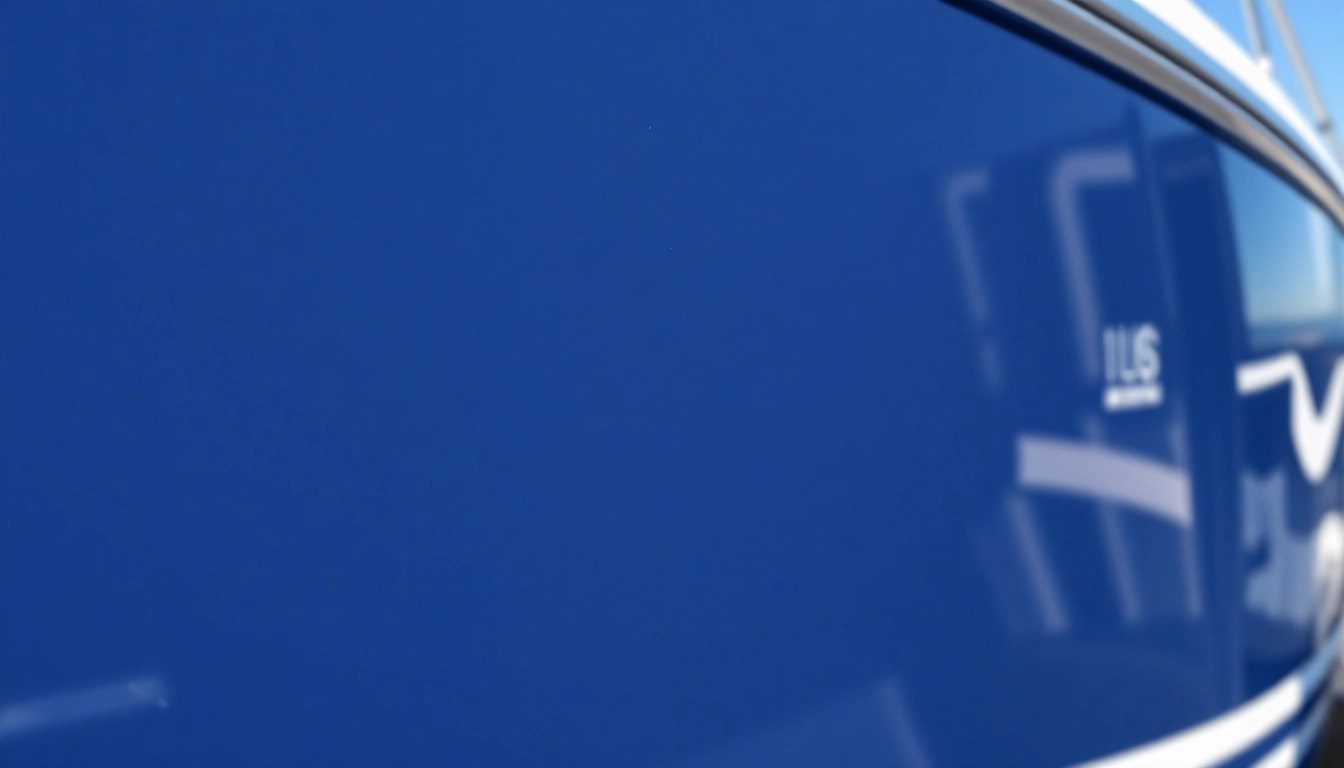Understanding the Benefits of Boots Versiegelung
In the realm of watercraft maintenance, ensuring the longevity and pristine appearance of your boat hinges on effective protective measures. One of the most critical steps in this process is applying a high-quality Boots Versiegelung—a specialized marine sealant that creates a durable barrier against environmental insults. This protective coating not only enhances the visual appeal of your boat but also significantly extends its lifespan by shielding against UV rays, saltwater, algae, and other corrosive elements.
Why Proper Sealing Extends Your Boat’s Life
Proper sealing acts as the first line of defense for your watercraft. Without an effective protective layer, gelcoat and painted surfaces succumb quickly to the damaging effects of UV exposure, moisture ingress, and chemical reactions. A high-quality Boots Versiegelung forms a resilient coat that resists these threats, reducing required maintenance and reapplication frequency. For boat owners, regular sealing is an investment in preserving the value, appearance, and performance of their vessel over years of use.
Key Features of Top Boots Versiegelung Products
Leading boots sealants share several essential features. These include chemical resilience, UV stability, hydrophobic properties to repel water, and ease of application. Many modern sealants incorporate advanced polymer technology for long-lasting protection, while some offer additional features such as easy removal or enhanced gloss enhancement. Several high-end products, like Gtechniq Marine Ceramic Top Coat, leverage nanotechnology to provide ceramic-like hardness, offering exceptional surface coverage and dirt-repelling capabilities.
Comparing Different Types of Marine Sealants
Marine sealants come in various formulations tailored to specific needs. Among the most common are:
- Polymer-based Sealants: Widely used for their ease of application and excellent UV resistance, these provide a flexible, durable protective film that can be reapplied periodically.
- Ceramic Coatings: Offering unparalleled hardness and chemical resistance, ceramic coatings like the Gtechniq Marine Top Coat create an almost permanent shield, ideal for high-end boats requiring superior protection.
- Liquid Waxes: Traditional, user-friendly options that add depth and shine, though generally less durable than advanced polymer products.
Choosing the right type depends on your specific vessel material, budget, and maintenance plans. For instance, gelcoat surfaces benefit from high-gloss, durable coatings, while painted surfaces might require a specific compatible sealant to avoid discoloration.
Applying Boots Versiegelung: Step-by-Step Guide
Preparation of the Boat Surface for Optimal Results
Preparation is crucial. Begin by thoroughly washing the boat with a specialized cleaner like the BCC Power Cleaner, ensuring all dirt, salt, and old wax residues are removed. Use high-quality microfiber towels or wash mitts such as the BCC Microfaser Towel or BCC Wash-Kit to gently clean surfaces without introducing micro-scratches. For stubborn grime, consider using a foam gun like the BCC Snow Foam Gun to apply a pre-treatment that lifts contaminants effectively.
Best Practices for Application and Curing
After cleaning, ensure the surface is completely dry. Apply the sealant in a shaded, well-ventilated area using a soft applicator or polishing pad, such as the BCC Polierpuck or the BCC Polierschwamm. Use thin, even coats to prevent streaks and pooling. Follow the manufacturer’s instructions regarding curing time—typically 12-24 hours—before exposing the boat to moisture or UV rays. For enhanced durability, a second layer can be applied after the first has cured fully.
Common Mistakes to Avoid During Sealing
Many boat owners face issues like uneven application, missed spots, or applying sealant on unprepared surfaces. Avoid these pitfalls by ensuring thorough cleaning, working in dry conditions, and applying in stages. Overapplication can lead to smudges and longer curing times, while neglecting proper surface prep compromises adhesion and longevity. Additionally, avoid applying sealants in direct sunlight, as rapid curing can cause streaking.
Maintenance and Longevity of Boat Sealing
Regular Cleaning and Inspection Tips
Maintaining your sealed surface involves regular washing with gentle, pH-neutral cleaners and microfiber towels to preserve the protective layer. Periodic inspections should check for signs of wear, such as dullness or minor scratches. Use a soft cloth and appropriate polishing compounds, like the BCC Power Polish, to restore gloss without damaging the coating.
Re-sealing and Repair Strategies
Re-application of the sealant is recommended every 6-12 months, depending on exposure conditions. Minor damages, like scratches or chips, can be repaired by cleaning the area and reapplying a fresh layer of sealant. For extensive repairs or significant damage, consider removing the old layer with a suitable Polierschwamm or pad and reapplying a fresh coating for uniform protection.
Climate and Environmental Effects on Sealed Surfaces
Extreme weather conditions impact sealant longevity. High UV exposure, saltwater, and freeze-thaw cycles accelerate wear. Protective measures include applying a ceramic coating for high durability and frequent maintenance to ensure the protective layer remains effective. Proper storage in covered, shaded environments during the off-season can extend the lifespan of your sealant and surface.
Choosing the Right Boots Versiegelung for Your Boat
Factors to Consider Based on Boat Material and Usage
Material compatibility is vital. Gelcoat surfaces respond well to high-gloss, polymer-based or ceramic coatings. For painted surfaces, select sealants designed explicitly for paint to avoid discoloration or peeling. Usage patterns also dictate choice: boats in saltwater environments benefit from ultra-durable, hydrophobic coatings, while recreational boats in freshwater may suffice with less robust sealants.
Expert Recommendations and Product Comparisons
Leading industry products like the MARINE SEALANT MS-3000/60 V2 and the Gtechniq Ceramic Top Coat are highly recommended due to their proven performance in harsh marine conditions. Consumer reviews highlight their ease of application, excellent gloss retention, and long-lasting protection. For cost-conscious buyers, brands like Autosol offer effective alternatives with reasonable durability, making them suitable for infrequent boat owners.
Cost-Effective Options for Long-Term Protection
Investing in a premium Boots Versiegelung initially might seem costly but offers better value over time by reducing reapplication frequency. Combining regular maintenance with high-quality sealants like BCC Power Sealer or affordable nanotechnology-based products ensures a reliable, long-term barrier that preserves your vessel’s appearance and structural integrity.

